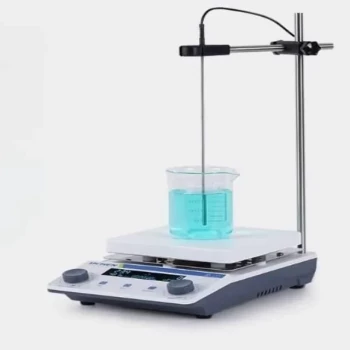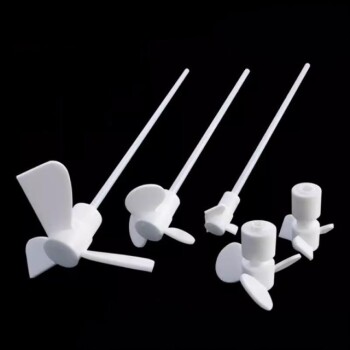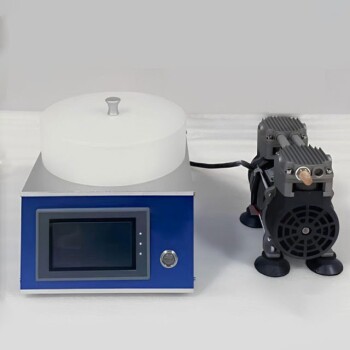A roller mixer is a laboratory device designed for the gentle and consistent mixing of liquids and samples. It operates using a motor-driven mechanism that rotates rollers, creating a rolling and rocking motion. This motion ensures even mixing of substances in various containers, such as bottles, tubes, or flasks. Roller mixers are particularly useful for applications requiring gentle agitation, such as cell culture work, blood sample preparation, or chemical reactions where vigorous mixing might damage sensitive samples. They are widely used in research, clinical, and industrial laboratories due to their ability to provide uniform mixing without introducing air bubbles or causing sample degradation.
Key Points Explained:

-
Purpose of a Roller Mixer:
- The primary purpose of a roller mixer is to facilitate the gentle and uniform mixing of liquids and samples. It is especially useful for applications where vigorous shaking or stirring might damage delicate samples, such as biological materials or chemical reactions requiring controlled conditions.
-
Mechanism of Action:
- Roller mixers use a motor-driven mechanism to rotate rollers. These rollers create a rolling and rocking motion, which ensures that the contents of containers (e.g., bottles, tubes, or flasks) are mixed evenly without the need for manual intervention.
-
Applications in Laboratories:
- Cell Culture Work: Roller mixers are ideal for gently agitating cell cultures to ensure even nutrient distribution and prevent cell clumping.
- Blood Sample Preparation: They are used to mix blood samples with anticoagulants or other reagents without causing hemolysis or damage to blood cells.
- Chemical Reactions: Roller mixers are employed in chemical laboratories to mix reagents gently, ensuring consistent reaction conditions and minimizing the risk of contamination or sample degradation.
-
Advantages Over Other Mixing Methods:
- Gentle Mixing: Unlike laboratory vortex mixers or magnetic stirrers, roller mixers provide gentle agitation, making them suitable for sensitive samples.
- Uniform Mixing: The rolling and rocking motion ensures even distribution of substances, reducing the risk of stratification or uneven mixing.
- Minimal Air Bubble Formation: Roller mixers minimize the introduction of air bubbles, which is crucial for applications like cell culture or protein studies.
-
Types of Containers Supported:
- Roller mixers are versatile and can accommodate a wide range of container types, including:
- Bottles (e.g., serum bottles, reagent bottles)
- Tubes (e.g., centrifuge tubes, test tubes)
- Flasks (e.g., Erlenmeyer flasks, culture flasks)
- Roller mixers are versatile and can accommodate a wide range of container types, including:
-
Key Features to Consider When Purchasing:
- Speed Control: Adjustable speed settings allow users to customize the mixing intensity based on the sample type and application.
- Roller Size and Material: Rollers should be made of durable, non-reactive materials (e.g., rubber or silicone) to prevent contamination and ensure longevity.
- Capacity: The number of containers the mixer can handle simultaneously, which varies depending on the model.
- Stability and Noise Level: A stable base and low noise operation are essential for maintaining a comfortable and safe laboratory environment.
-
Maintenance and Care:
- Regular cleaning of the rollers and housing to prevent cross-contamination.
- Periodic inspection of the motor and moving parts to ensure smooth operation.
- Lubrication of mechanical components as recommended by the manufacturer.
-
Comparison with Other Mixing Devices:
- Vortex Mixers: Provide rapid mixing but are less suitable for delicate samples.
- Magnetic Stirrers: Require a stir bar and are more prone to introducing air bubbles.
- Orbital Shakers: Offer vigorous shaking, which may not be ideal for sensitive samples.
By understanding the purpose, mechanism, and applications of roller mixers, laboratory professionals can make informed decisions about their use and ensure optimal performance in various experimental setups.
Summary Table:
| Feature | Description |
|---|---|
| Purpose | Gentle and uniform mixing of liquids and samples. |
| Mechanism | Motor-driven rollers create rolling and rocking motion for even mixing. |
| Applications | Cell culture work, blood sample preparation, and chemical reactions. |
| Advantages | Gentle mixing, uniform distribution, minimal air bubble formation. |
| Container Types | Bottles, tubes, and flasks. |
| Key Features | Adjustable speed, durable rollers, capacity, stability, and low noise. |
| Maintenance | Regular cleaning, motor inspection, and lubrication. |
| Comparison | More suitable for delicate samples than vortex mixers or magnetic stirrers. |
Need a roller mixer for your lab? Contact us today to find the perfect solution for your sensitive sample needs!
















